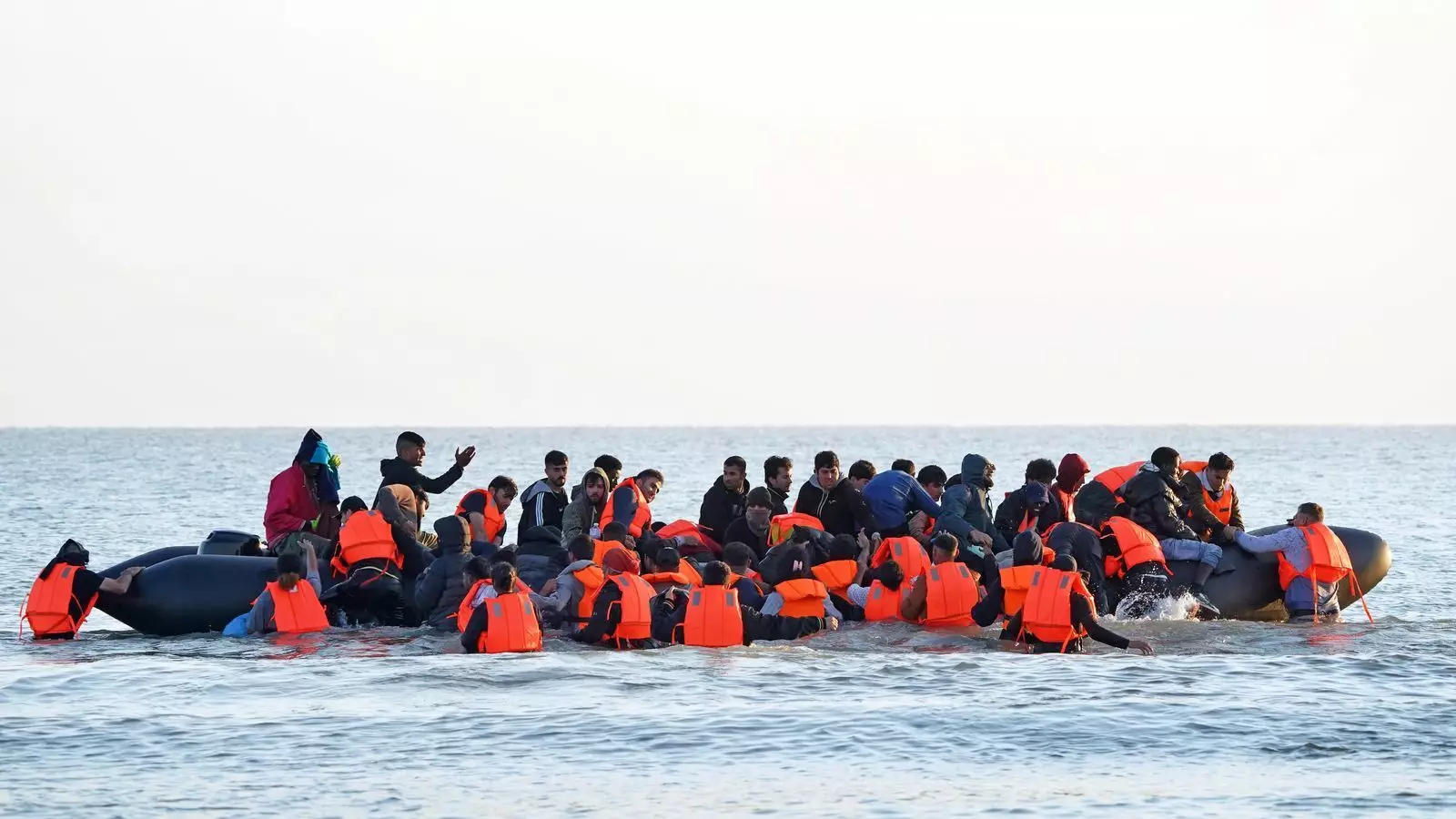In 2024, the precarious and perilous journey across the English Channel saw an alarming increase, with provisional government statistics indicating that 36,816 migrants made the crossing to the United Kingdom. This represents a significant 25% rise from the previous year, where the number stood at 29,437. Notably, while 2024 recorded the second-highest number of crossings since recording began in 2018, it was still a reduction of 20% from the peak of 45,774 arrivals seen in 2022. These numbers underscore a troubling trend that may reflect worsening global conditions compelling individuals to seek refuge through such dangerous means.
While the figures depict a growing flow of migrants, the human cost of this journey remains hauntingly absent from the data. Notably, the Home Office refrained from publishing the specific death toll associated with these crossings, yet it is widely acknowledged that 2024 became one of the deadliest years for individuals attempting this hazardous route. Reports from the French coastguard indicate that 53 lives were lost in the last year alone while navigating what is recognized as the busiest shipping lane worldwide. This stark reality raises pressing questions about the safety and support systems in place for vulnerable populations attempting to find solace in the UK.
A Historical Perspective on Migrant Trends
Examining historical data reveals a stark escalation in crossings. From a mere 299 individuals in 2018, the numbers subsequently skyrocketed to 1,843 in 2019, then surged by more than four times to 8,466 in 2020. The upward trajectory continued, peaking at 28,526 in 2021. As the figures evolve, they suggest that more individuals are resorting to perilous crossings as their plight becomes increasingly desperate. With viable legal pathways available predominantly for refugees from select regions like Ukraine and Afghanistan, many are left to navigate dangerous, often illegal routes that put their lives at the mercy of unscrupulous smuggling operations.
Legal avenues for migrants are restricted, predominantly favoring those recognized by the UN High Commissioner for Refugees, as well as close family members of existing refugees. This creates an environment where only a limited number of refugees from specific regions can seek protection legally, while others must turn to alarming alternatives. The presence of human trafficking and smuggling rings compounds the problem, exposing vulnerable individuals to exploitation and neglect. Furthermore, as noted by a Home Office spokesperson, these criminal gangs exhibit a disturbing disregard for human life, focusing solely on profit from their exploits.
Political Responses and the Road Ahead
In light of these alarming statistics and increasingly dangerous conditions, political parties in the UK are rallying to address the issue. Both the Conservative and Labour parties are committed to reducing the number of individuals making the perilous journey across the Channel. Labour, in particular, has pledged to take decisive action against the gangs responsible for these exploitative practices. However, without a comprehensive and compassionate approach that considers the underlying causes of migration, efforts may fall short of providing a sustainable solution to this growing humanitarian crisis.
Ultimately, as the numbers tell a stark story, it is crucial for policymakers to consider the human aspect and work towards more effective, humane solutions that address the root causes driving individuals to undertake such dangerous journeys.


Leave a Reply